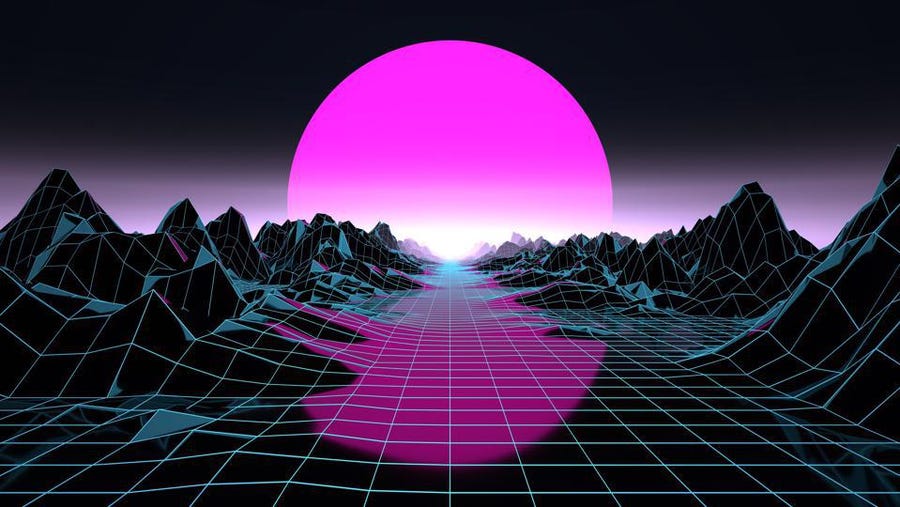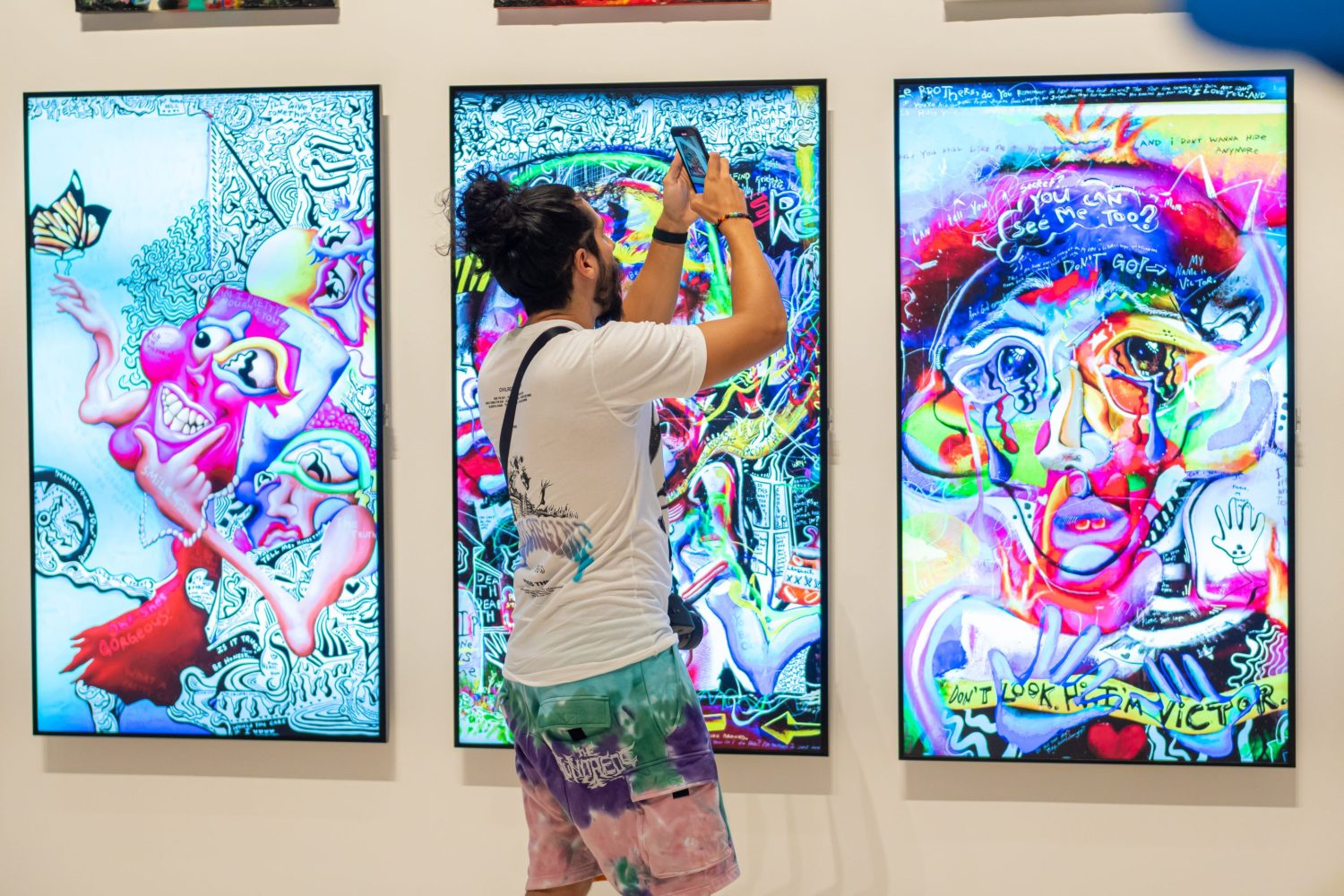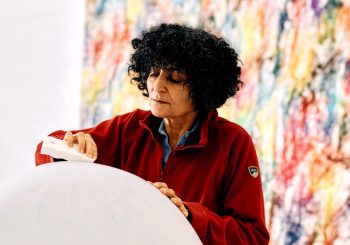I recall walking into the Mauritshuis in the Hague – a Dutch museum, tempered by old architecture and the distinct smell of wood varnish – and thinking this was the definition of art: expert strokes and aged turpentine, canvases that were centuries old. Existing in a space between the Rembrandts and one small, delicate goldfinch painting made it hard to define art as anything else. I felt like a magnificent loser in comparison. Two years from that moment, it’s 2020 and I’m on a train heading for Schiphol airport, amidst the strangest circumstances.
Nestled between posts narrating the pandemic’s trajectory and country-wide lockdowns, there was another topic needling its way into my Twitter feed as I scrolled through during the train ride: NFTs. Otherwise known as non-fungible tokens, NFTs were being touted as a means that enabled artists to sell their digital artwork, regardless of what format it came in. Artist after artist flew across my congested Twitter feed, capitalizing on the craze with their own NFTs
This was the start of a digital art renaissance I thought, and few people outside the social media realm were aware of it at the time. It seemed that cryptocurrencies had found a new purpose: art. What was once a dialogue on Bitcoin investing and the digital ethics of cryptocurrency had morphed into a self-sustaining economy: one rife with transactions, stock, and most interestingly, art auctions.
But much like cryptocurrency, NFTs pose an interesting challenge for the digitally inclined: with all the digital waste and carbon emissions credited to e-commerce, are they avenues worth pursuing? Moreover, can something so detrimental contribute to a larger, more selfless reality? It’s unlikely. Charity NFTs are something of an ethical dilemma, but it’s hard to explore them without breaking the NFT controversy down to its barebones.
What exactly are NFTs?
For the uninitiated, non-fungible tokens are files stored in an Ethereum blockchain, a type of record-keeping database. NFTs, at their most rudimentary level, are original digital files that are auctioned off and bought via cryptocurrencies like Bitcoin – much like one would auction off a painting. Having an NFT is symbolic ownership at best; while someone’s name might be on the file itself, it doesn’t stop others from accessing it for free on the internet.
Despite existing for a while now, NFTs have become absurdly fashionable in the last year and a half. Between Beeple making 6.6 million off a simple ‘gif’ and Kings of Leon being the first band to turn their album into an NFT, there’s no doubt e-commerce is in its honeymoon phase, despite its terrible toll on the environment. In fact, people have taken what seems to be a semi-meaningless, destructive medium and capitalized on it in unexpected ways. Ways, I was soon to learn, were less commercial but wholly humanitarian in nature.

Charity NFTs: A Moral Dilemma
I was first introduced to the concept of Khaled Jarrar: a Palestinian digital artist and filmmaker with his own bouts of controversy here and there. At the time, I knew enough about NFTs to dislike them, but an article by the Art Newspaper was quick to catch my attention. It was hard to scroll past a title as striking as “Artist Khaled Jarrar is selling handfuls of soil from Palestinian farmland – and has turned them into NFTs.”
Unsurprisingly, Jarrar wasn’t actually selling Palestinian soil, rather the had turned one of his photos into an NFT and auctioned it off.
The title was referring to the handful of mud featured in the photograph, though Jarrar put up an interesting, idyllic argument nonetheless. “I am selling little plots of Palestine that, for the first time in the last century unequivocally belong to whomever buys it. Non-fungible,” Jarrar said, in an effort to emphasize the Israeli government’s long reign of violent, and oppressive exploits..
In essence, Jarrar was trend-hacking the NFT boom to make a humanitarian plea. Moreover, according to him, any and all profit made from his auction would be donated to charities aiming to protect Palestinian children


It was a difficult moral dilemma to encounter as an Egyptian. I considered myself an advocate of the Palestinian cause for years, but NFTs had become synonymous with environmental decay. NFTs were, in one Twitter artist’s words, “ecological nightmare pyramid scheme,” and I agreed with them. Still, Jarrar had taken something otherwise entirely destructive and attempted to do some transformative good.
It was easier to vilify those who spent hundreds of thousands on a 50-second Grimes video, but trying to choose one humanitarian cause over the other was far more difficult. For years, Palestine has been the Middle East’s maternal responsibility – or that is what many Egyptians are raised to believe. I was confronted with a crossroads: my socialized need to protect Palestine came face to face with my environmental responsibility.
My decision not to support Jarrar’s vision came with it’s own cognitive dissonance – but it was not enough to sway me. While it seems strange and utilitarian to forfeit one just cause for another, I could not overlook digital powerhouses of environmental ruin for one artistic pursuit; encouraging NFTs in any capacity was not a viable option.
The cryptocurrencies used to exchange them, paired with the digital waste that tail-ends each transaction, are why NFTs are a central causes of modern carbon emissions. The servers used to house these tokens and the millions of e-currencies involved with them is immeasurable in its lack of environmental ethics and disregard for a warming planet. It was the age-old argument of “do means justify their ends” – an argument I was always incensed existed in the first place. Perhaps it is idealism and melodrama, but it felt like a bankruptcy of meaning: nothing good could come from something innately horrible.
Collateral damage was not a necessity, it was a choice.
Jarrar’s artwork is no different. Although he brings forward a sympathetic argument and a worthy cause, the impact he has made with his NFT hasn’t been anything more than superficial; the war in Palestine continues and the summers are getting hotter with no sign of stopping. The gesture is a grand one which succeeded in introducing this premise to technologically-uninterested communities – but the desired effect was limited at best. Without knowing it, Jarrar had become hero to none and villain to others.
“There is no must in art, because art is free,” writes Kandinskty, a Munich-based art theorist and painter. There is some truth to his writing, perhaps, in his era of budding 19th century surrealism and our own sensationalist, manic art forms. But an even older proverb, one much more infamous and worth remembering, claims that “the road to Hell is paved with good intentions.”
Any opinions and view-points expressed in this article are exclusively those of the author. They do not reflect the views of the Egyptian Streets’ editorial team. To submit an opinion article, please email [email protected].






Comments (6)
[…] Source link […]
[…] Why Charitable NFTs Won’t Save Palestine? […]